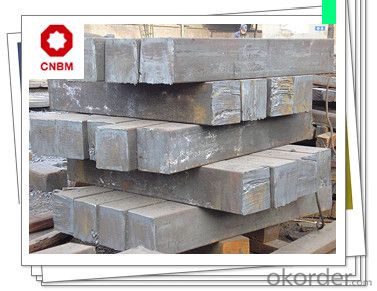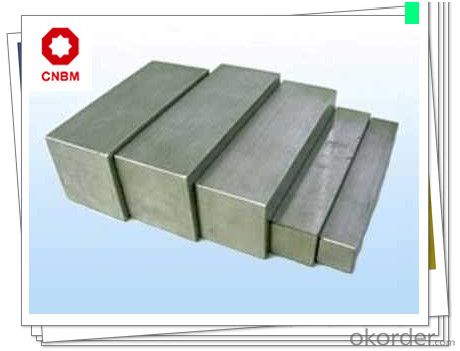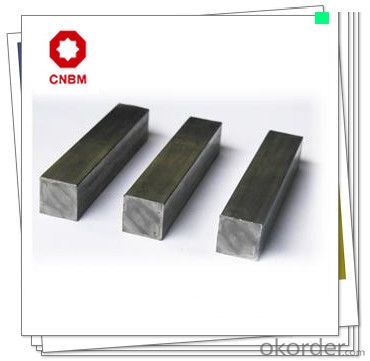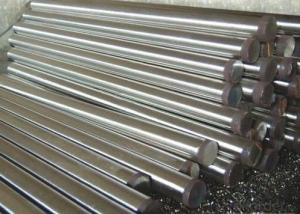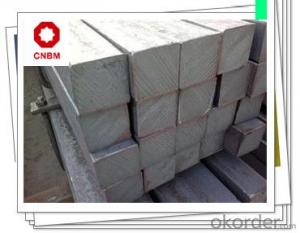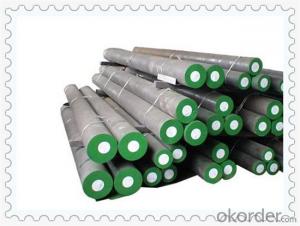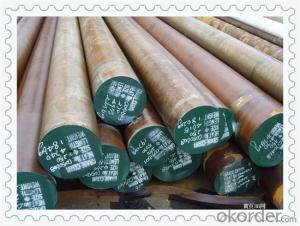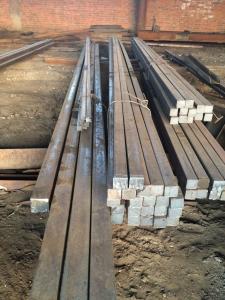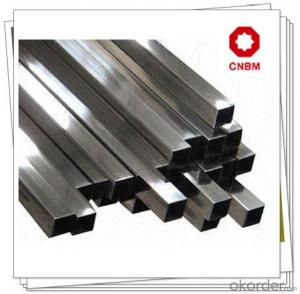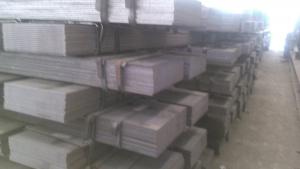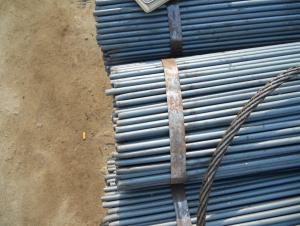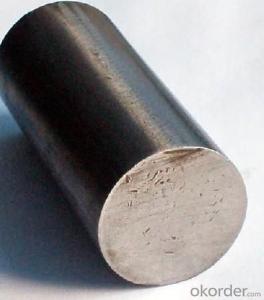Carbon Structural Steel Square Bars Q235CR
- Loading Port:
- Shanghai
- Payment Terms:
- TT OR LC
- Min Order Qty:
- 25 m.t.
- Supply Capability:
- 120000 m.t./month
OKorder Service Pledge
OKorder Financial Service
You Might Also Like
Carbon Structural Steel Square Bars Q235CR
Product Specification
1, Chemical Composition %
| Grade | C | Si | Mn | S | P | Cr |
| Q235CR | ≤0.22 | ≤0.35 | ≤1.4 | ≤0.050 | ≤0.045 | ≥0.30 |
2, Mechanical Properties
| Strength of Extension σb | Yield Strength σs | Elogation δ5 |
| 375-500 Mpa | ≥235 Mpa | ≥25 % |
3, Diameter: 9mm, 9.8mm, 10mm, 12mm, 12.5mm, 13mm, 15mm, 15.87mm, 16mm, 19mm,
20mm, 22mm, 25mm, 25.4mm, 28mm, 38mm, 50mm, 51.5mm, 53mm, 65mm, 75mm, 100mm
Application
1, Widely used in construction and engineering structure.
2, Widely used in making reinforcing steel bar or building plant room rack, high voltage transmission tower, bridge, vehicle, boiler, vessel, ship, etc.
3, Widely used in manufacturing mechanical parts which are not required to be with high performance.
4, Q235CR with grade C or D can be used as steel with special use.
5, Can be used in making all kinds of mould hand and other unimportant mould parts.
6, Can be used as punch material.
Product Main Points
1, Heat Treatment: normalizing, annealing, tempering, quenching
2, Surface Treatment: black, grinding, bright, polish
3, Product Process: hot rolled, cold drawn, forged
Product Show
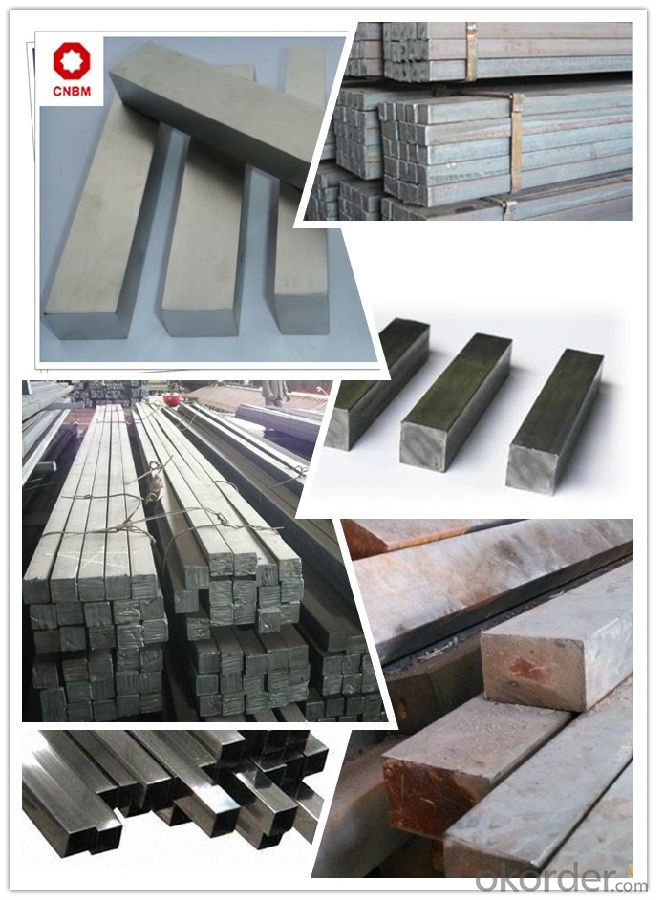
Work Shop
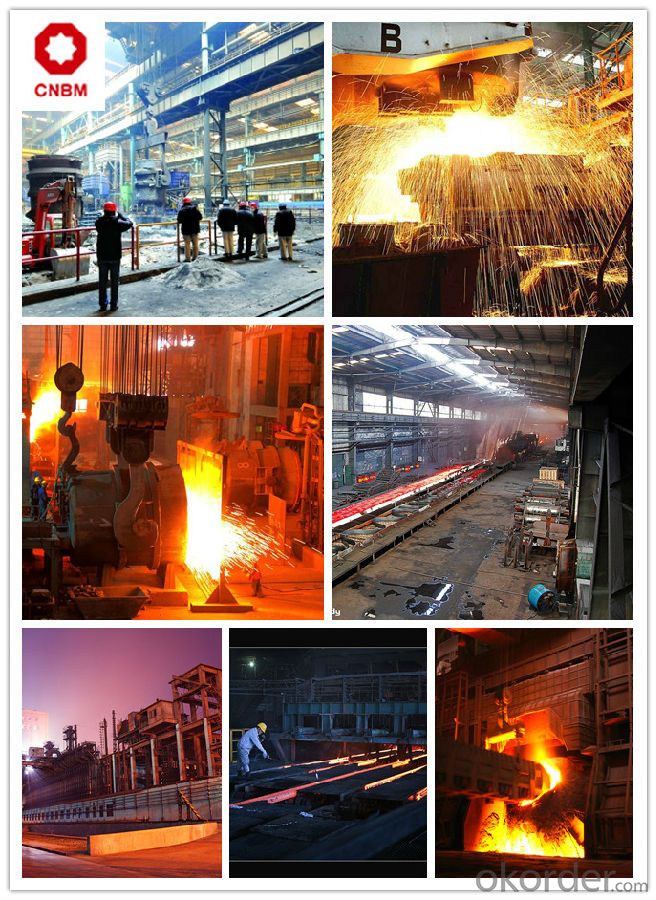
About Us

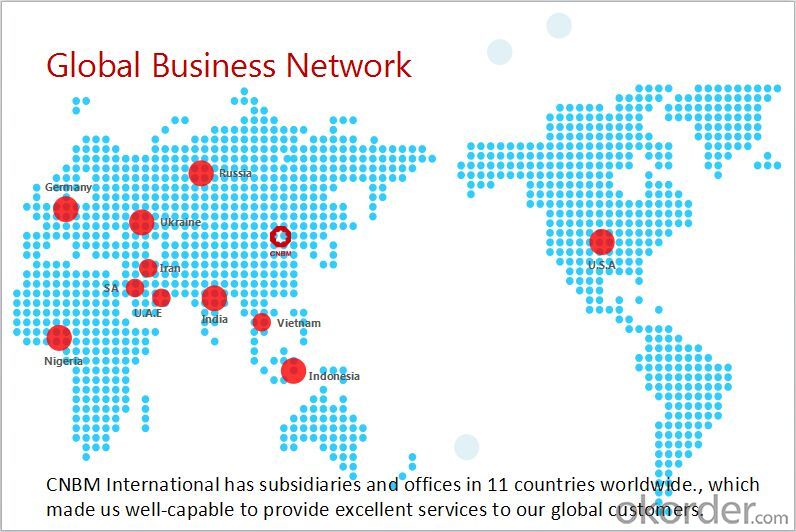
- Q: Difference between forging and round steel
- A forging is a process in which a metal is heated and shaped by plastic deformation or a desired compressive force is applied. This force is typically achieved by using a hammer or pressure. The casting process constructed a fine grain structure and improved the physical properties of the metal. In the practical use of parts, a correct design allows the particles to flow in the direction of the main pressure.
- Q: What is the elongation of a steel round bar?
- The elongation of a steel round bar refers to the amount of lengthening or stretching the bar undergoes when subjected to an applied force or load.
- Q: What is the maximum hardness achievable for steel round bars?
- The maximum hardness achievable for steel round bars depends on various factors such as the specific type of steel used, the heat treatment process applied, and the desired properties. However, in general, the maximum hardness achievable for steel round bars is typically around 60-65 HRC (Rockwell hardness scale) for high carbon steels, and can be even higher for certain specialty alloys or through additional surface treatments.
- Q: What is the difference between a bright and a black steel round bar?
- The main difference between a bright and a black steel round bar is the surface finish. A bright steel round bar has a smooth and shiny surface due to the additional processing steps it undergoes, such as pickling or cold drawing. On the other hand, a black steel round bar has a rough and dark surface due to the absence of these additional processing steps. Additionally, the black steel round bar may also have a coating of oil or rust inhibitor to protect it from corrosion.
- Q: What are the different finishes available for steel round bars?
- Steel round bars are available in several finishes, each serving a specific purpose and offering distinct benefits. Some commonly used finishes include: 1. Hot Rolled: By heating the steel above its recrystallization temperature and rapidly cooling it, a rough and scaly surface texture is achieved. This finish provides excellent corrosion resistance and durability. 2. Cold Rolled: The steel is rolled at room temperature, resulting in a smooth and polished finish. Cold rolled steel round bars are known for their precise dimensions, tight tolerances, and improved surface finish. 3. Bright Drawn: This finish involves subjecting the steel round bars to a drawing process, where they are pulled through a die to achieve the desired shape and size. It leaves the surface smooth, bright, and free from imperfections. 4. Polished: Polishing is typically done after cold rolling or drawing the steel round bars. Abrasive materials or chemical treatments are used to remove surface imperfections and create a highly reflective finish. Polished steel round bars are commonly used for decorative purposes. 5. Ground: Grinding is a process where abrasive wheels are used to remove surface imperfections or irregularities from the steel round bars. This results in a smooth and even finish, making the bars suitable for applications requiring tight tolerances and uniformity. 6. Galvanized: Galvanizing involves dipping the steel round bars in a bath of molten zinc, creating a protective layer that prevents corrosion and increases their lifespan. This finish is ideal for outdoor applications or environments with high humidity or moisture. These various finishes offer different properties and appearances, allowing steel round bars to be used in industries such as construction, automotive, manufacturing, and engineering. It is important to consider the specific requirements and conditions of the intended use when selecting the appropriate finish for steel round bars.
- Q: Are steel round bars suitable for high-stress applications?
- Yes, steel round bars are suitable for high-stress applications. Steel round bars possess high tensile strength, durability, and resistance to deformation, making them ideal for withstanding heavy loads and intense pressure in various industries such as construction, manufacturing, and engineering. The robust nature of steel round bars ensures their suitability for high-stress applications.
- Q: What are the different standards for steel round bars?
- There are several different standards for steel round bars, including ASTM A36, ASTM A105, ASTM A276, ASTM A479, and ASTM A572. These standards outline the specific requirements for the chemical composition, mechanical properties, and dimensions of steel round bars for various applications.
- Q: How do steel round bars perform under bending or flexing forces?
- Steel round bars generally perform well under bending or flexing forces due to their high tensile strength and ductility. When subjected to bending forces, the steel round bars can resist deformation and maintain their shape, making them suitable for various applications such as construction, manufacturing, and engineering. The combination of high strength and ductility allows the bars to absorb and distribute the applied load evenly, minimizing the risk of failure or breakage. The behavior of steel round bars under bending or flexing forces can be further enhanced by factors such as the alloy composition, heat treatment, and manufacturing process. Different grades of steel can offer varying levels of strength, toughness, and resistance to bending. Heat treatment processes like quenching and tempering can further improve the mechanical properties, making the bars more resistant to bending and flexing. However, it is important to note that excessive bending or flexing can lead to permanent deformation or failure of the steel round bars. Overloading or repeated bending beyond the material's limits can cause stress concentrations, microcracks, or even fractures. Therefore, it is crucial to determine the appropriate bending limits and ensure proper design and installation to maintain the structural integrity and safety of steel round bars under bending or flexing forces.
- Q: What are the advantages of using nickel-aluminum alloy steel round bars?
- There are several advantages to using nickel-aluminum alloy steel round bars. Firstly, these bars have excellent corrosion resistance, making them suitable for use in harsh environments or applications where they may come into contact with corrosive substances. Secondly, the alloy steel composition provides high strength and durability, making these bars capable of withstanding heavy loads or extreme temperatures. Additionally, nickel-aluminum alloy steel round bars offer good thermal conductivity, allowing for efficient heat transfer in various applications. Lastly, these bars are easily machinable, enabling precise shaping and customization to meet specific project requirements.
- Q: How are steel round bars used in the construction of airports and runways?
- Steel round bars are commonly used in the construction of airports and runways due to their strength, durability, and versatility. These bars are primarily used in the reinforcement of concrete structures, ensuring that the airport infrastructure can withstand heavy loads and extreme weather conditions. In the construction of airport runways, steel round bars are commonly used to reinforce the concrete pavement. The bars are placed within the concrete during construction, providing additional tensile strength to the runway. This reinforcement helps to prevent cracking and crumbling under the weight of aircraft, ensuring a safe and reliable surface for landing and takeoff. Additionally, steel round bars are used in the construction of airport terminals and other buildings within the airport complex. They are often utilized in the framework of the structures, providing support and stability. The bars are commonly used in the construction of columns, beams, and foundations, ensuring the overall structural integrity of the buildings. Furthermore, steel round bars are employed in the construction of ancillary facilities such as hangars, control towers, and fuel storage facilities. These bars are used to reinforce the concrete foundations and walls, providing additional strength and stability to these critical structures. In summary, steel round bars are essential components in the construction of airports and runways. Their use reinforces concrete structures, providing the necessary strength and durability to withstand heavy loads and harsh environmental conditions. From runways to terminals and ancillary facilities, steel round bars play a crucial role in ensuring the safety and reliability of airport infrastructure.
Send your message to us
Carbon Structural Steel Square Bars Q235CR
- Loading Port:
- Shanghai
- Payment Terms:
- TT OR LC
- Min Order Qty:
- 25 m.t.
- Supply Capability:
- 120000 m.t./month
OKorder Service Pledge
OKorder Financial Service
Similar products
Hot products
Hot Searches
Related keywords






